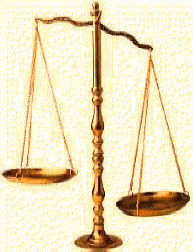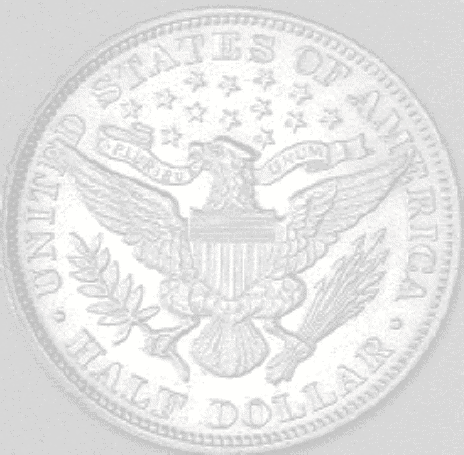
|
|
||
|
|
|
|
|
|
||

-64-
FOR BETTER OR WORSE:
The Green Act
On July 12, 1943, the Green Act was passed "authorizing” the President of the United States through the Secretary of the Treasury, and upon the recommendation of the War Production Board, to sell or lease any silver held or owned by the United States providing the Treasury maintained an amount of silver sufficient to the "face value” of all unredeemed Silver Certificates. This "authority" expired on December 31, 1945 (“Coins and Currency” 5).
Originally, Federal Reserve notes were required by law to be backed by 40 percent gold, but on June 12, 1945, this requirement was relaxed to 25 percent of those notes in circulation (“Coins and Currency”, 24).
"IN GOD WE TRUST”
On July II, 1955, Congress approved Public Law 140 providing
That at such time as new dies for the printing of currency are adopted in connection with the current program of the Treasury Department to increase the capacity of presses utilized by the Bureau of Engraving and Printing, the dies shall bear at such place or places thereon as the Secretary of Treasury may determine to be appropriate, the inscription "In God We Trust", and thereafter this inscription shall appear on all United States currency and coins.
The Bureau of Engraving and Printing began printing the new one "dollar" series of Silver Certificates on Thursday, July 25, 1957. They were released into circulation on October 1st (Press Release, 1957). In 1963, the promise to pay was deleted from Federal notes and "In God We Trust" was added.
In 1964, the minting of silver coins was halted. In 1965, the silver content of newly minted quarters and dimes was eliminated. A layer of copper was sandwiched between two layers of cupro-nickel. The silver in the half "dollar" was reduced to 40 percent and by 1970 was eliminated entirely (Encyclopedia Americana, 26:829). *
* “Money" and "Wealth" --"As money, a 1964 dime and a 1965 dime are the same, but it takes the money in 10 or more 1965 dimes to exchange for the wealth in a 1964 dime." Yet, since the wealth in a 1965 dime is 1/3 of a cent, the wealth in a 1964 dime is 500 times the former. (Wilber, p. 28)
Silver Certificates were no longer issued after 1963, and were withdrawn from circulation. After June 1968 they could no longer be redeemed (Collier’s Encyclopedia, 21:33).
In God we must come to trust for
early in 1968, Congress abolished the Gold Reserve (Lockman, 8). The
Federal Reserve notes are completely irredeemable. A "note" is
representative of a debt. Therefore a "dollar" note is known as a
"dollar bill." It is not possible to “buy” anything with a "note"
because it has no intrinsic value. The exchange leaves the "seller" with
nothing of value. All exchanges made with such "notes" constitutes
"legal" plunder, but they are not "lawful" because they are part of an
economic system formulated by men in rebellion to the righteous Law of
God. Since God did not create paper to be precious, all such currency is
a perversion of the created order.
There is only one lawgiver, and that is God. "The Righteous
Lord loveth righteousness and He has commanded just weights and
measures. Although God is great, God is good. He is great in His
goodness, and He is good in His greatness – and He will not bless a
person or a nation that continues to live in rebellion to His Law.
___________________________________________
BIBLIOGRAPHY
"Coins and Currency of the United States." Published by
Office of the Secretary of Treasury, June 30, 1947.
Collier's Encyclopedia. Edited by William Halsey. Vol. XXI of 24
vols. Copyright 1982. New York: Macmillan
Educational Company.
Encyclopedia Americana. Vol. XXIV of 30 vols.
Copyright 1984. Grolier Inc.
Griffin, Des. Fourth Reich of the Rich. Copyright 1983. South
Pasadena, California: Emissary Publications.
Hicks, John D. The American Nation. Second Edition. Copyright
1949. Cambridge, Massachusetts: The
Riverside Press.
Jevons, W. Stanley. Money and the Mechanism of
Exchange. Copyright 1876. New York.
Johnson, Roger. Historical Beginnings -- The Federal Reserve.
Edited by Mary Jane Coyle. Sixth Printing.
Copyright 1981. Boston: Federal Bank of Boston.
Lockman, Vic. "The IRS vs. the Constitution." (no date). Tyler, Texas: Vic Lockman.
Lockman, Vic. "The Official Counterfeiter." Copyright
1974. Anderson, California.
Nichols, Dorothy M. and Eleanor H. Erdevig. "The Two Faces of Debt."
August 1978. Chicago: Federal
Reserve Bank of Chicago.
Press Release issued by the Treasury Department,
Thursday, July 25, 1957.
Saussy, F. Tupper. The Miracle on Mainstreet. Copyright 1980.
Sewanee, Tennessee: Spencer Judd
Publishers.
Yeoman, R. S. A Guide Book of United States Coins. 38th Edition. Copyright 1984. Racine, Wisconsin:
Western Publishing Company, Inc.
White, Horace. Money and Banking. Copyright 1895.
Boston: Ginn and Company.
Wilber, Dave. "Fool's Gold Is Green." Copyright 1982. St. Louis: Awake
America.
